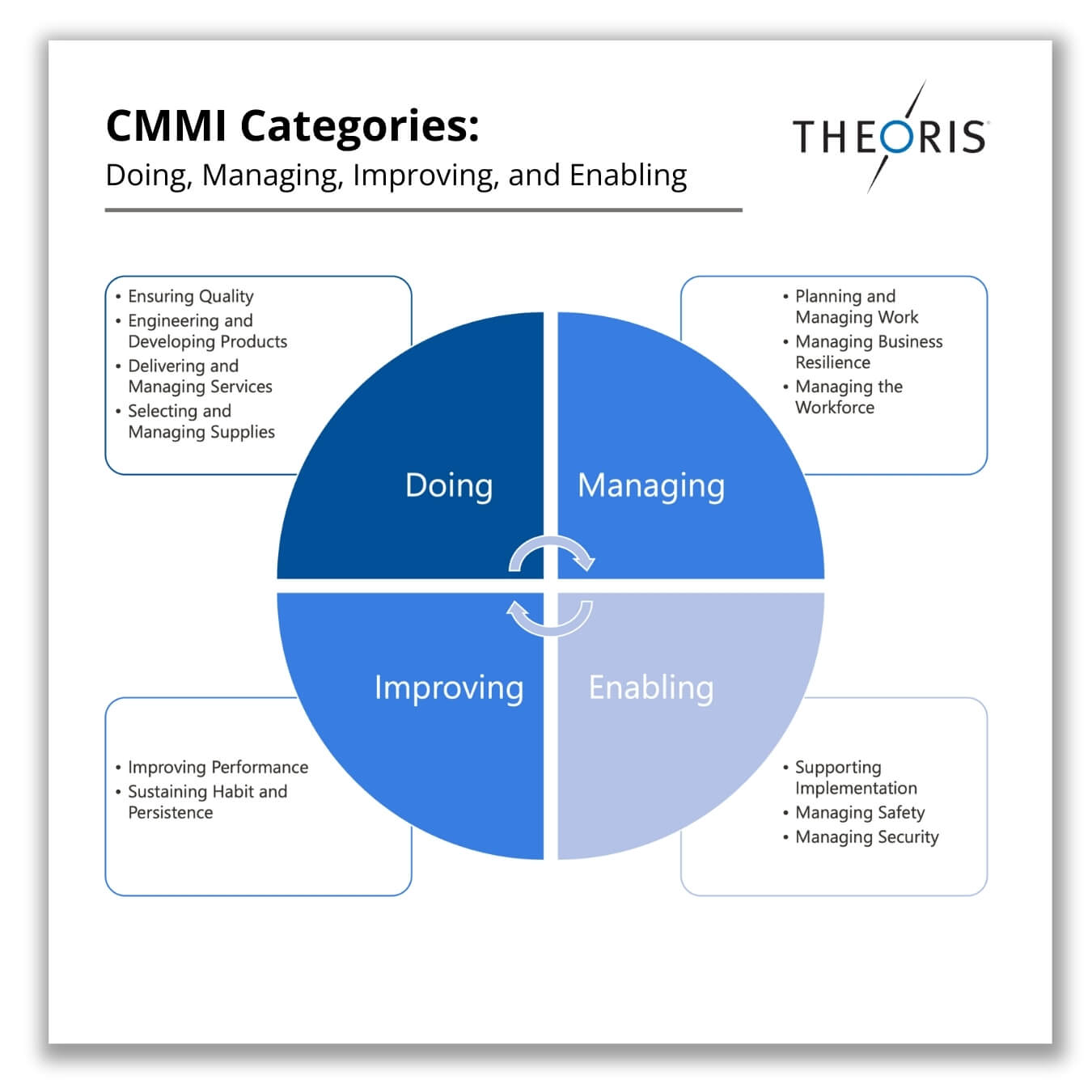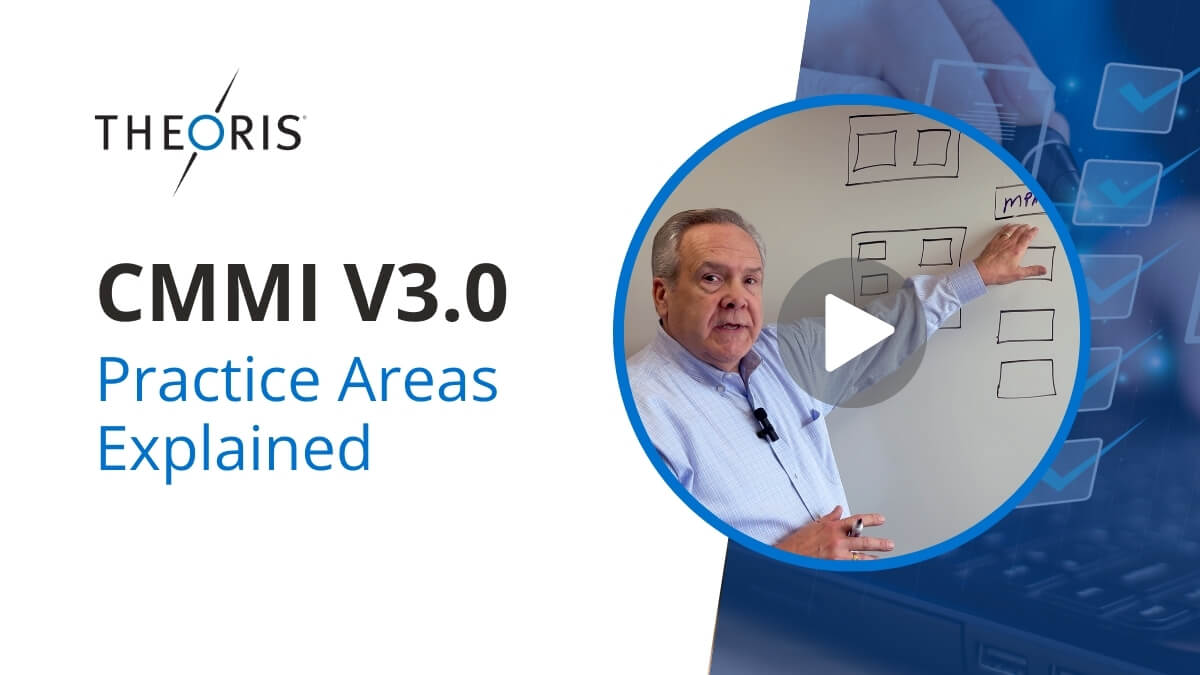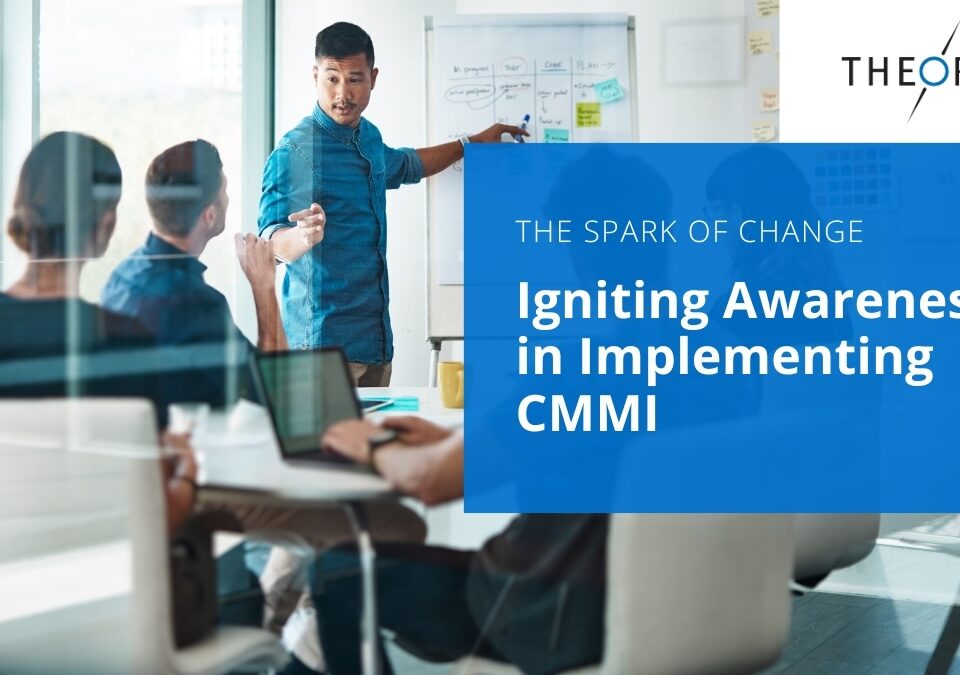Understanding CMMI V3.0 Practice Areas: A Video Explainer with Steve Kelly

The Spark of Change: Igniting Awareness in Implementing CMMI
March 26, 2025CMMI, or Capability Maturity Model Integration, is a framework that helps organizations improve performance by building and refining key business processes. It’s widely used in software development, engineering, and other complex industries to boost quality, consistency, and efficiency. If you’re new to CMMI, you can explore this article to learn more about the model and its benefits. At Theoris, we’re passionate about helping teams not only meet process improvement standards—but understand them.
In this short whiteboard video, Sr. CMMI Consultant Steve Kelly breaks down how the CMMI Practice Areas fit together and support each other. His explanation makes the model easier to follow for organizations navigating performance improvement, appraisals, and day-to-day delivery.
Watch the video below to hear Steve’s explanation on the 17 Core Practice Areas with two from the Development Domain, and how they apply to your teams—from project managers and BAs to developers and senior leadership.
What You’ll Learn in This Video
Steve walks through a visual breakdown of how the CMMI Practice Areas interact—and how they map to the four key categories shown in the model:
- Doing – Core engineering practices like Requirements Development, Technical Solution, Product Integration, Verification & Validation, and Configuration Management.
- Managing – Project-focused areas like Planning, Estimating, Monitoring & Control, Risk Management, and Governance.
- Enabling – Foundational support areas like Organizational Training, Process Asset Development, and Implementation Infrastructure.
- Improving – Areas focused on continual improvement, including Cause Analysis & Resolution, Decision Analysis & Resolution, Process Change Management, and Process Quality Assurance.
Each area plays a unique role. As Steve explains, they’re all interconnected. And essential for driving real performance improvement.

How Practice Areas Interact
These areas don’t exist in silos. Steve shows how practice areas feed into one another. For example, how Requirements Development drives Technical Solutions, which flows into Product Integration, eventually looping back through Verification & Validation, and ending with Configuration Management.
- How Leadership and Governance Fit In: Senior leaders can track performance and allocate resources more effectively. Governance dashboards and measurement inputs from all practice areas help drive improvements.
- The Importance of Organizational Training: You can’t implement CMMI without preparing your people. Steve emphasizes how Organizational Training supports successful adoption of all practice areas.
Why It Matters
Understanding how these pieces fit together can transform your CMMI efforts from a checkbox exercise into a powerful performance improvement engine. Whether you’re a team lead, QA manager, or developer, knowing how your work connects to the bigger picture helps drive consistency, quality, and business value.
Let’s Talk CMMI
Need help with a CMMI appraisal or implementation? We’d love to hear about what you’re working on. Get in touch with us.




